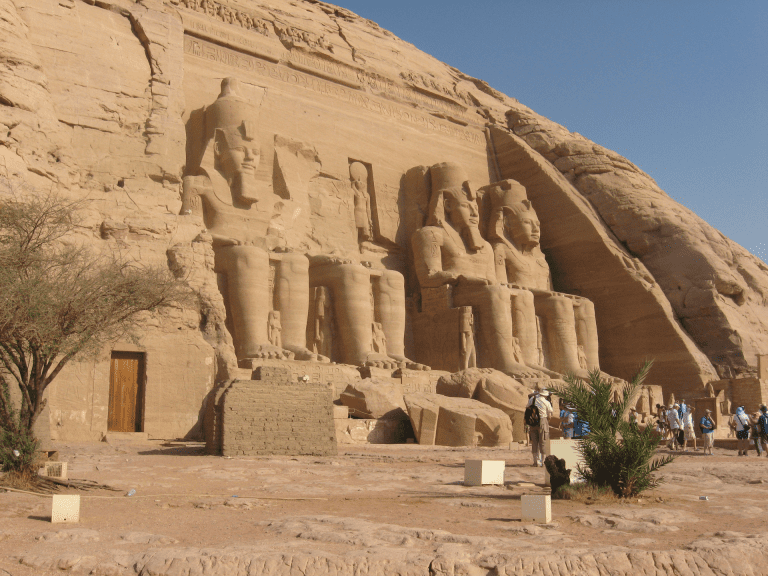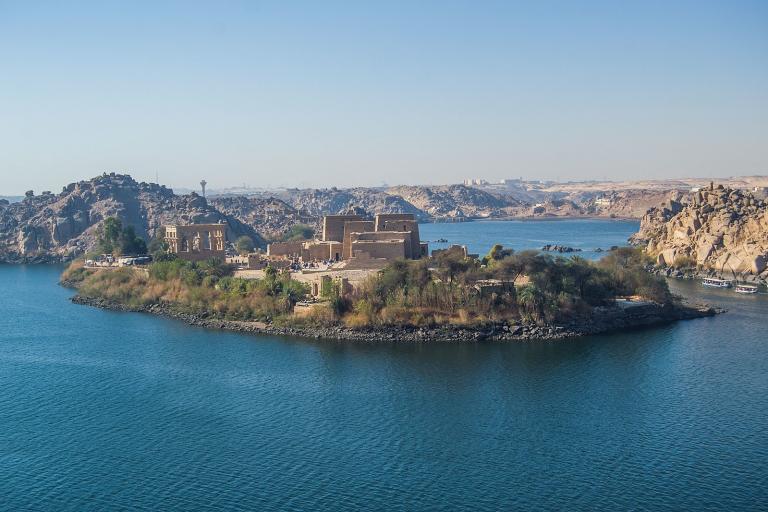
The companion temple that Ramses dedicated to his wife Nefertari — which is mostly about himself — is located roughly a hundred yards away.
After several days of little or no access to the internet, I’m going to try to catch up a bit.
We began 2019 by rising very, very early to fly down to Abu Simbel, on the shore of Lake Nasser and roughly forty miles from Egypt’s border with the Sudan. This is the famous boundary-marking temple of Ramses II that was moved when the waters building up behind the new Aswan High Dam threatened to submerge it forever. It was probably intended to warn marauding or mischief-making Nubians that they were entering territory controlled by a very powerful god-king — rather like a distinctly less friendly “Welcome to Centerville” sign.
Returning by plane to Aswan, we visited the High Dam itself, took another gander at crocodile-infested Lake Nasser, and then took a short but picturesque boat ride on the Nile out to the beautiful Temple of Isis — the beloved Egyptian goddess, not the terrorist group — at Philae.

(Wikimedia Commons public domain photo)
On the way back, we stopped off at a factory and sales center for perfumes and essential oils, which are a significant element of the tourist economy in Aswan. I stayed on the bus and chatted with a few like-minded souls.
After lunch back on our boat, the Radamis I, we boarded a smaller and more maneuverable boat for a ride up the Nile to a Nubian village — a village that was transplanted to its present position when Lake Nasser inundated its former site. This is one of my favorite parts this tour of Egypt. We visit the home of the village chief, stroll up and down the main (dirt) street, fight off aggressive merchants, dodge trotting camels, and enjoy a really, really colorful little settlement. And the evening boat ride is exceptionally pleasant — passing by such landmarks as the old Cataract Hotel, where (among others) Churchill and Eisenhower stayed and where Agatha Christie (I’m told) wrote Murder on the Orient Express.
Heading to the Nubian village and back, we also pass by Elephantine Island, in the middle of the Nile River, which (to me, anyway) is one of the most intriguing places in the Middle East. (Very shortly, I’ll post the texts of two of my Deseret News columns relating to it.)
Posted from Cairo, Egypt











